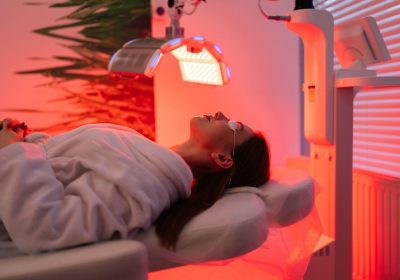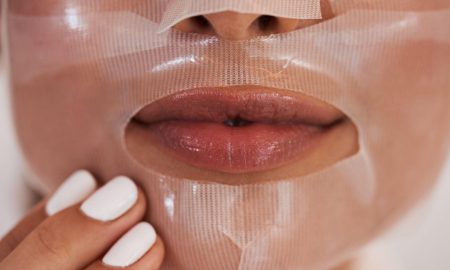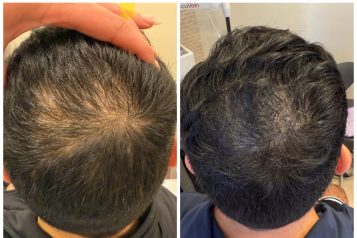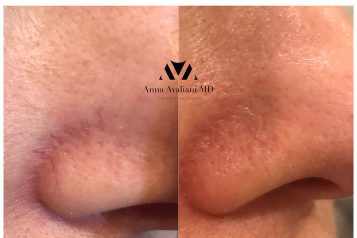 Photo Credit: Shutterstock
Photo Credit: Shutterstock
“Mommy makeover” procedures, which can include a combination of breast augmentations, tummy tucks, and liposuction, are continuing to grow in popularity. And, while pregnancy and childbirth are certainly exciting and fulfilling experiences, there’s no denying the significant impact they have on a woman’s body. With women making over 80% of the healthcare decisions in the US alone, it is imperative that they understand their options for surgery. Finding the right surgeon can make a meaningful difference.
While every “mommy makeover” is unique and depends on the patient’s individual needs and goals, pre-surgical discussions with their plastic surgeon about pain management and recovery expectations should be a top priority. One of the commonest concerns I hear from patients who are considering surgery is post-operative pain, and how it will be controlled.
In addition to surgical results, women, especially mothers, heading into surgery, may be concerned about the recovery after surgery and how it may hinder their ability to be present with their child(ren). A recent survey found that almost all women (96%) ages 30-50 are motivated to get back to their daily routine following surgery and more than 40% cite caregiving responsibilities as a main driver to quickly recover. While opioids have been commonly prescribed to manage pain after surgery, they can actually be a contributing factor to a delay in recovery.
Current advancements and innovations in care have allowed for many surgical procedures, including “mommy makeovers,” to be successfully conducted with alternatives to standard opioid medications while still providing very effective pain relief. As a board-certified plastic surgeon at Fiala Aesthetics, I have integrated combined two advances: multimodality analgesia, which uses a combination of non-opioid oral medications, and a long-acting injectable local anesthetic, called EXPAREL® (bupivacaine liposome injectable suspension). This combination has been a great addition to my pain management protocol for my tummy tuck and mommy makeover patients. Some of my own published research showed that tummy tuck patients who received EXPAREL nerve blocks needed 50% less pain medications in their early postoperative course, due to a much higher level of post-operative comfort.
 Photo Credit: Shutterstock
Photo Credit: Shutterstock
I use EXPAREL together with an ultrasound-guided injection technique, to put the medication exactly where it works best, using a regional nerve block method. These really help the patients in the first 2-3 days after surgery, helping them get through the toughest part of their recovery. And by reducing the amount of traditional opioid medication, I feel that we reduce many of the potential complications opioids are known for –constipation, drowsiness, confusion, the risk for dependence and even addiction.
Being the plastic surgeon who can provide patients with a quicker-recovery, more comfortable experience has been a huge benefit for my practice. EXPAREL has helped improve my patients’ overall recovery experience for the range of “mommy makeover” procedures that I perform and helps them get back to their everyday activities as swiftly as possible. My patients certainly appreciate that!
As medical professionals, I feel it’s important to be up to date and aware of the best options that allow for an enhanced recovery experience. Whether going in for a breast augmentation, liposuction or tummy tuck, I urge all patients to find a board-certified plastic surgeon who is willing to work with them on a postsurgical pain management plan that aligns with their goals. Open conversations about surgery and pain management are important to have – so patients can learn about the latest options. These conversations can empower women to expect more from their surgery experience than they even thought was possible.
For more information about EXPAREL, please visit www.EXPAREL.com/safety.
Indication
EXPAREL® (bupivacaine liposome injectable suspension) is indicated for single-dose infiltration in patients aged 6 years and older to produce postsurgical local analgesia and in adults as an interscalene brachial plexus nerve block to produce postsurgical regional analgesia. Safety and efficacy have not been established in other nerve blocks.
Important Safety Information
EXPAREL should not be used in obstetrical paracervical block anesthesia.
In studies in adults where EXPAREL was injected into a wound, the most common side effects were nausea, constipation, and vomiting.
In studies in adults where EXPAREL was injected near a nerve, the most common side effects were nausea, fever, and constipation.
In the study where EXPAREL was given to children, the most common side effects were nausea, vomiting, constipation, low blood pressure, low number of red blood cells, muscle twitching, blurred vision, itching, and rapid heartbeat.
EXPAREL can cause a temporary loss of feeling and/or loss of muscle movement. How much and how long the loss of feeling and/or muscle movement depends on where and how much of EXPAREL was injected and may last for up to 5 days.
EXPAREL is not recommended to be used in patients younger than 6 years old for injection into the wound, for patients younger than 18 years old for injection near a nerve, and/or in pregnant women.
Tell your health care provider if you or your child has liver disease, since this may affect how the active ingredient (bupivacaine) in EXPAREL is eliminated from the body.
EXPAREL should not be injected into the spine, joints, or veins.
The active ingredient in EXPAREL can affect the nervous system and the cardiovascular system; may cause an allergic reaction; may cause damage if injected into the joints; and can cause a rare blood disorder.
Author: Thomas Fiala, MD, MBA, FACS, FRCSC. This article is sponsored by Pacira BioSciences, Inc.
PP-EX-US-7295























